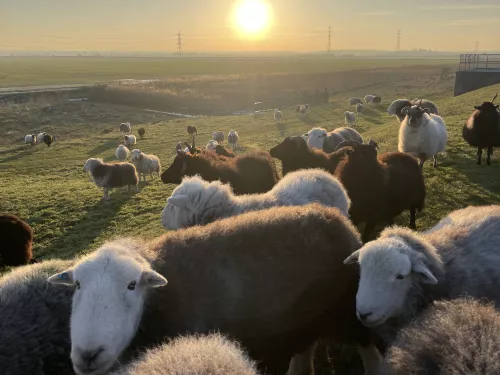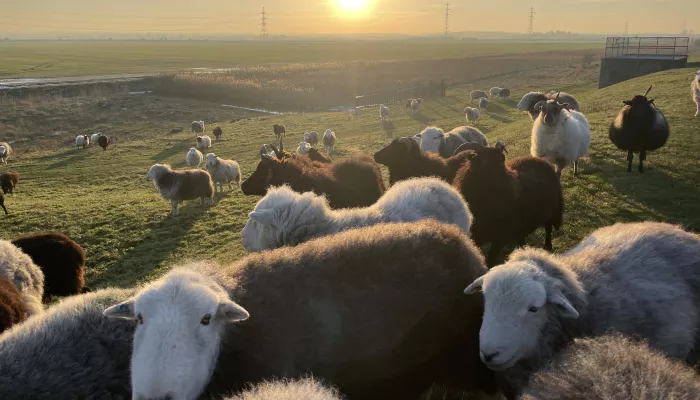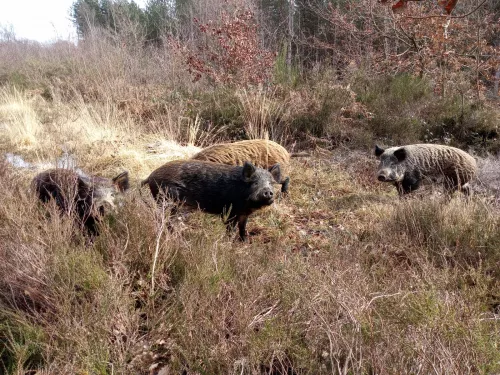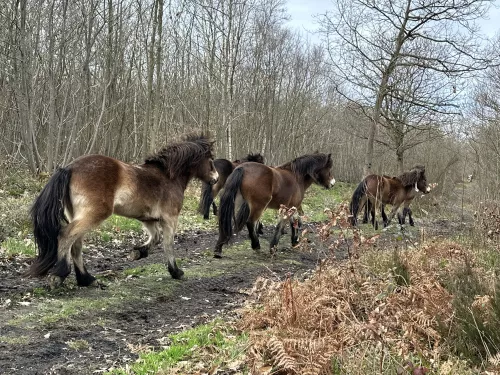
The retirees
Living their best life surrounded by lots of grass.

Resident of the Cumbrian fells for hundreds of years, this hill breed is the backbone of our sheep flocks.
Friendly, calm, chunky, sure-footed and thrifty, they make light work of the lowland vegetation of Kent, taking a wide range of plants including bramble and creeping thistle. Their docile nature makes them a pleasure to catch and handle. They are rarely sick, with many living into their mid-teens.
The Herdwick sheep ‘fleece’ is more like hair than most other breeds so doesn’t tend to get tangled in undergrowth. It’s not great for spinning but it’s incredibly warm so is felted and used as eco-loft insulation and for food chilling by some mail-order companies. It’s also mixed with bracken to provide a good alternative seed compost.
Lambs are born black to make it easier for them to be hidden in nooks and crannies while the mums forage for food. They get lighter as they get older therefore those that are almost white are often in their teens.

Living their best life surrounded by lots of grass.

These pigs are as close as you can get to the wild boar and also, despite being a domesticated version of this wild species, share many of its traits.

Find out about Exmoor ponies and why we use them in conservation.